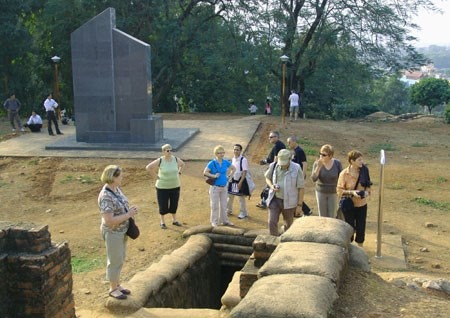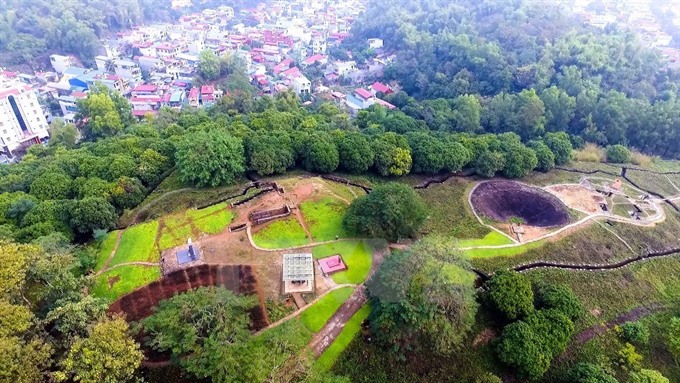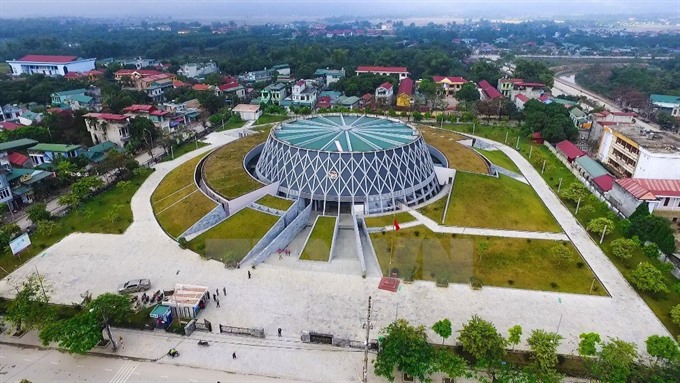 Life & Style
Life & Style

Extreme climate change and escalating encroachment by local people looking to expand their homes and farmland are threatening Điện Biên Phủ historical tourism complex in the northern mountainous province of Điện Biên.
 |
| Foreign friends: Tourists visiting part of the Điện Biên Phủ complex. — VNA/VNS Photos |
HÀ NỘI — Extreme climate change and escalating encroachment by local people looking to expand their homes and farmland are threatening Điện Biên Phủ historical tourism complex in the northern mountainous province of Điện Biên.
These factors are also hindering the protection and preservation of the special national historical site, an authority official has said.
Phạm Việt Dũng, director of the Điện
Dũng said the complex, with a total of 45 relic sites, sprawls across different geographical areas under the administrative management of many local authorities, including the Tuần Giáo and Điện Biên districts and the Điện
The relics were built long ago by different kinds of materials, most of which are not particularly sustainable, so they were always bound to be damaged by erosion, deformation and even simply the tropical weather of heat and high humidity, as well as extreme climate changes around the year, according to the provincial official.
Meanwhile, near many relics in the Điện
“This has caused negative impacts on the management of the relics,” said Dũng.
At present, the work of land clearance, demarcation, satellite positioning of the relics and granting land use licences has been implemented poorly.
“Only 28 among the 45 protected relics in the site have been demarcated for protection. The boundary demarcation markers are scattered and far away from each other. Local residents sometimes intentionally move the markers to take the land for their own purposes,” said the official.
A report from the Điện Biên District authority recently revealed residents in Thanh Nưa Commune, Điện Biên District, have been escalating squatting along the protective corridor 2 of the Độc Lập Hill—one of the major relics in the complex—despite warnings from local authorities.
The report said that most of the squatting had occurred since April and was intended to secure land to build more housing and cultivate more farmland.
Two households in the Nà Nhạn Commune, also in Điện Biên District, had violated the rules protecting the special national historical relics by building two houses on stilts and installing some living facilities near
Those residents were living just 60m from the protected site, famous for depicting soldiers pulling artillery by hand during the war against the French.
Dũng said since receiving reports from local authorities about the damage to historical relics’ protected sites, the department had authorised all of its units in localities to intensify the dissemination of information to improve awareness and responsibility on the protection of the sites.
The province appealed for people to follow State regulations and policies for the preservation of national heritage by limiting the effects from nature and preventing the destruction by humans.
In the long term, the provincial official said the department would submit a plan with adequate measures and fully regulated documents to undertake legal procedures to grant land use licences for households living in and around the protected sites.
“The plan will provide firm legal foundations to boost the management and cope with violations in the complex,” according to Dũng.
Earlier in 2016, the provincial department provided advisory dossiers to the provincial People’s Committee on promulgating regulations on management, protection and preservation of historical relics in the province.
The committee has also submitted to the Government a long-term plan towards 2030 on the management, protection and preservation of the Điện Biên Phủ historical and tourism value.
If the plan is approved, it would help provide long-term and comprehensive solutions for the authorities to overcome current obstacles, according to the official. — VNS
 |
| King of the Hill: A1 Hill (also called Eliane 2 by French troops) - the site of the most famous battle of Điện Biên Phủ campaign - has become a tourist attraction. |
 |
| We are the champions: The Điện Biên Phủ Victory Museum. |